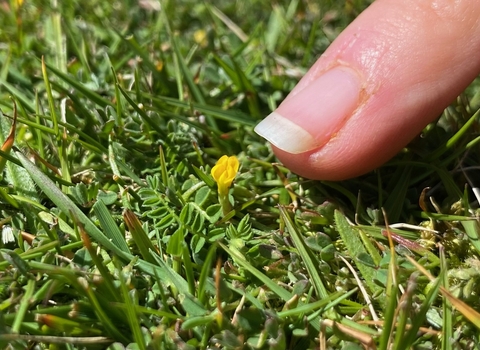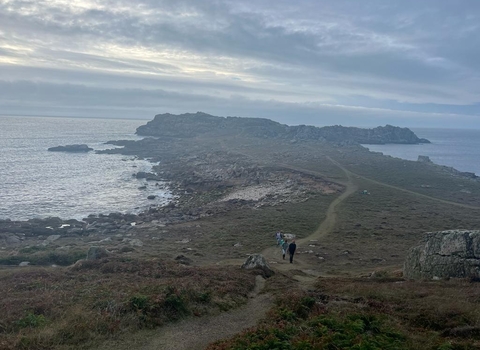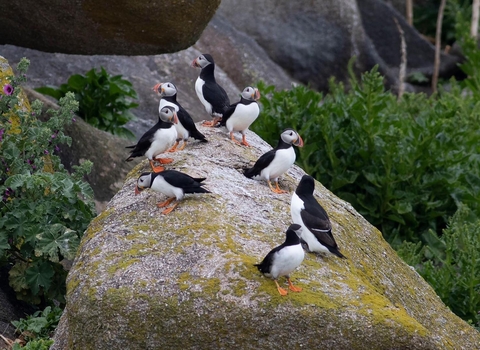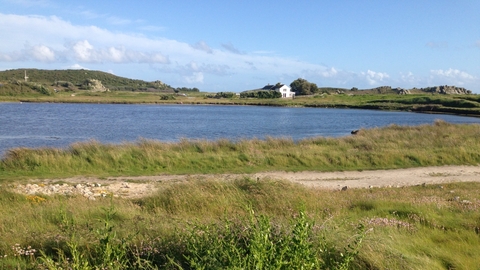
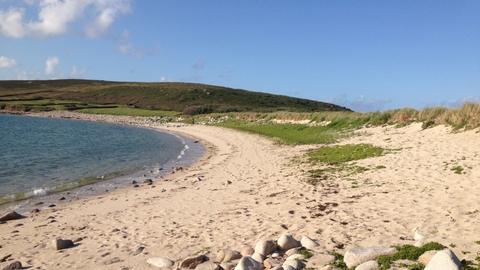
Pool of Bryher & Popplestone Bank
Know before you go
Dogs
When to visit
Opening times
Open year roundBest time to visit
Spring & SummerAbout the reserve
Situated on the west side of Bryher, Pool of Bryher is the only true brackish lagoon on Scilly. It is separated from the sea by a narrow and very mobile storm beach, backed by a small dune system. This pool can be great for birds, with species like moorhen, mallard, oystercatcher, greenshank and grey heron being present at various times, and other rarer species dropping in during migration. Great white egret and an array of small waders have been seen, as well as even rarer species including a great blue heron from North America. Over on the beach, you might see grey seals.
The pool supports a population of beaked tasselweed and sea-milkwort. Around the edges, saltmarsh rush is abundant, along with lesser sea-spurrey and red goosefoot. Little Pool, a smaller pond to the north, supports lesser marshwort and brackish water-crowfoot, along with lesser spearwort and marsh pennywort.
The dune system behind the beach is dominated by marram, which is backed by a small area of dune grassland with sand sedge, red fescue, buck’s-horn plantain, thrift and wild carrot. Nationally rare early meadow-grass grows in the sward.
We work in the area to remove species like European gorse and bramble, which would otherwise dominate the vegetation and impact on the fragile dune plants and ecosystem. We work with local farmer Graham Eggins of Hillside Farm to maintain and enhance the dune grassland. Grazing takes place in the spring and late summer to maintain the right conditions for these maritime species and to remove patches of sour fig (which arrived since severe storms of 2014). The pools are monitored and we control species like greater reedmace to prevent this species outcompeting the wetland plants.

